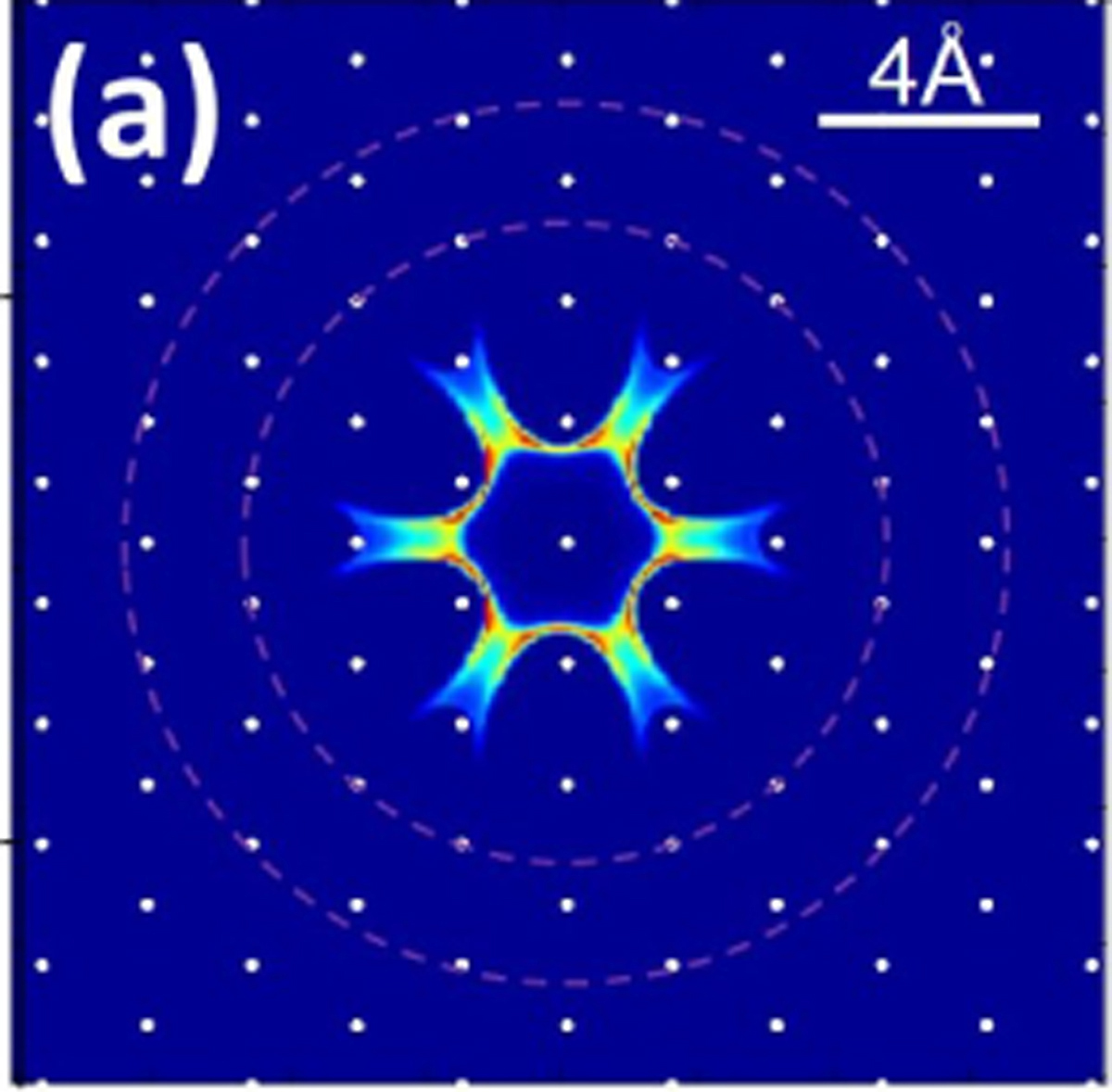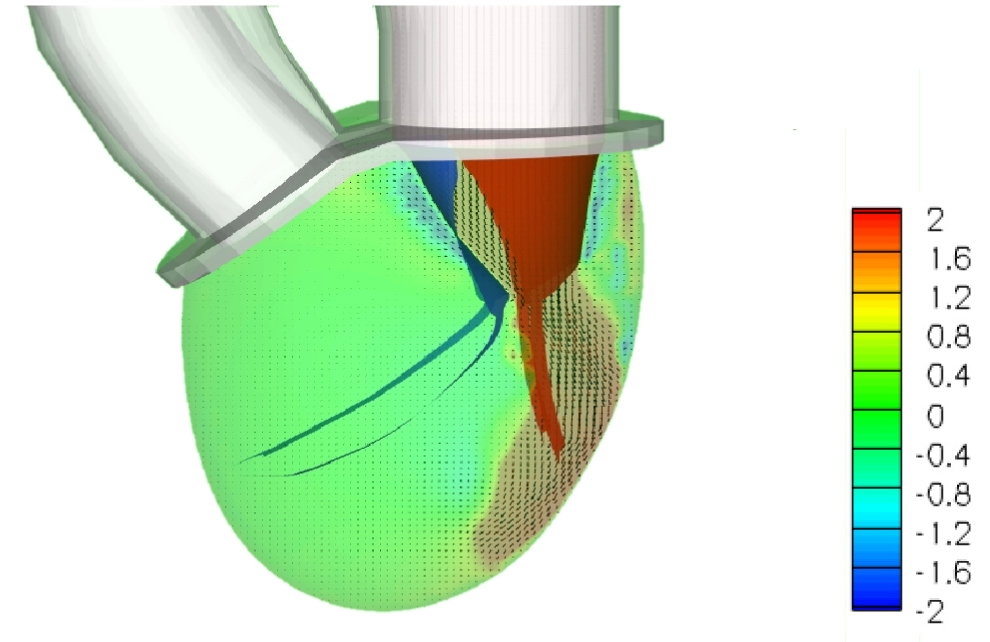News
EPJ H Highlight - Once upon a time, an exoplanet was discovered
- Details
- Published on 16 April 2018

Personal recollections of an astrophysicist shed new light on the 1995 discovery on 51 Pegasi b
In recent history, a very important achievement was the discovery, in 1995, of 51 Pegasi b, the first extrasolar planet ever found around a normal star other than the Sun. In a paper published in EPJ H, Davide Cenadelli from the Aosta Valley Astronomical Observatory (Italy) interviews Michel Mayor from Geneva Observatory (Switzerland) about his personal recollections of discovering this exoplanet. They discuss how the development of better telescopes made the discovery possible. They also delve into how this discovery contributed to shaping a new community of scholars pursuing this new field of research. In closing, they reflect upon the cultural importance that the 51 Pegasi b discovery had in terms of changing our view of the cosmos.
EPJ Data Science Highlight – The science behind what makes a bestselling book
- Details
- Published on 10 April 2018

Books that are fiction, thrillers or mysteries, have high initial sales numbers and are released around Christmas are more likely to be bestsellers, according to a study published in EPJ Data Science
(This post was originally published on the SpringerOpen blog)
A team of researchers from Northeastern University, Boston, used a big data approach to investigate what makes a book successful. By evaluating data from the New York Times Bestseller Lists from 2008 to 2016, they developed a formula to predict if a book would be a bestseller.
EPJ N Highlight - Novel approach for the study of reactive dissolution
- Details
- Published on 10 April 2018

With the goal of understanding and modelling the reactive dissolution of solids, new microscopic methods have been developed for the investigations of the phenomena and kinetics of these reactions, and applied to the dissolution of uranium dioxide in nitric acid media.
The first paper presents a state of knowledge of the dissolution of uranium dioxide in nitric acid media. It highlights the numerous chemical and physico-chemical issues which still need to be addressed concerning its understanding, with a focus on autocatalysis, mass-transport and non-uniform attack of the solids.
EPJ E Highlight - Simulations document self-assembly of proteins and DNA
- Details
- Published on 28 March 2018

Colloidal model featuring rigid bodies with two interaction sites explains how biological entities such as protein/DNA combinations can self-assemble
What makes particles self-assemble into complex biological structures? Often, this phenomenon is due to the competition between forces of attraction and repulsion, produced by electric charges in various sections of the particles. In nature, these phenomena often occur in particles that are suspended in a medium - referred to as colloidal particles - such as proteins, DNA and RNA. To facilitate self-assembly, it is possible to "decorate" various sites on the surface of such particles with different charges, called patches. In a new study published in EPJ E, physicists have developed an algorithm to simulate the molecular dynamics of these patchy particles. The findings published by Silvano Ferrari and colleagues from the TU Vienna and the Centre for Computational Materials Science (CMS), Austria, will improve our understanding of what makes self-assembly in biological systems possible.
EPJ A Highlight - Unresolved puzzles in exotic nuclei
- Details
- Published on 27 March 2018

A new review highlights the historical developments in our understanding of the nuclear structure of unstable and unbound forms of helium, lithium and beryllium
Research into the origin of elements is still of great interest. Many unstable atomic nuclei live long enough to be able to serve as targets for further nuclear reactions - especially in hot environments like the interior of stars. And some of the research with exotic nuclei is, for instance, related to nuclear astrophysics. In this review published in EPJ A, Terry Fortune from the University of Pennsylvania, in Philadelphia, USA, discusses the structure of unstable and unbound forms of Helium, Lithium, and Beryllium nuclei that have unusually large neutron to proton ratios - dubbed ‘exotic’ light nuclei. The author offers an account of historical milestones in measurements and the interpretation of results pertaining to these nuclei.
EPJ B Highlight - High-energy ions’ movement affected by silicon crystal periodicity
- Details
- Published on 21 March 2018

Thinnest-ever silicon crystal enhances ion channelling performance in particle accelerators
The thinner the silicon crystal, the better. Indeed, thinner crystals provide better ways to manipulate the trajectories of very high-energy ions in particle accelerators. Further applications include materials analysis, semiconductor doping and beam transport in large particle accelerators. All of these rely on our understanding of how positively-charged high-energy particles move through crystals. This process, called ion channelling, is the focus of a new paper by Mallikarjuna Motapothula and Mark Breese working at the National University of Singapore. In a paper published in EPJ B, the authors study how the crystal periodicity affects the motion of ions whose energy belongs to a 1 to 2 MeV range, as they are transmitted through very thin crystals on the order of a few hundred nanometres, and how it impacts their angular distribution.
Topical Review - Theory of the n=2 levels in muonic helium-3 ions
- Details
- Published on 09 March 2018
In this new article in EPJ D, Franke et al. review the present understanding of Lamb shift, fine- and hyperfine structure of the 2S and 2P states in muonic helium-3 ions in anticipation of the results of the first measurements of several 2S -> 2P transition frequencies in the muonic helium-3 ion, 3He+. This ion is the bound state of a single negative muon μ- and a bare helium-3 nucleus (helion), 3He++.
EPJ Plus Focus Point - Transition to Sustainable Energy Systems
- Details
- Published on 07 March 2018

The “Focus Point on the Transition to Sustainable Energy Systems” in the European Physical Journal Plus (EPJ Plus) tries to answer central questions regarding the planned Energy Transition, focusing on the power sector in Europe. Important is the role played by intermittent renewables as a low carbon electricity source, central in the plans by the EU Commission in its Energy Roadmap 2050. Their intermittency however strongly reduces efficiency and security of supply and back up by other systems is unavoidable – large storage and/or nuclear and/or fossil based. Storage of excess electricity production by intermittent renewables at the level required seems far-fetched at this moment and much more research will be needed before this can substantially contribute. With a limited contribution of dispatchable renewable electricity (hydro, bio-fuels etc.) and excluding à priori nuclear power, on various grounds, a continued use of fossil fuels imposes itself to guarantee a secured supply of electricity – in strong contrast with the original aims of the EU Energy Roadmap 2050. A rational debate involving all options is urgently needed and it is hoped that the set of papers in this focus point can contribute to improve insights in a determining factor for the future of our children and grandchildren.
All articles are are available here. For further information read the Editorial.
EPJ E Highlight - The unsuspected synergistic mechanism of the human heart
- Details
- Published on 28 February 2018

3D simulations reveals that every part of the human heart works in combination with the others, while all parts influence each other’s dynamics, giving clues to help prevent cardiac conditions
Did you know that the left side of the heart is the most vulnerable to cardiac problems? Particularly the left ventricle, which has to withstand intense pressure differences, is under the greatest strain. As a result, people often suffer from valve failure or impairment of the myocardium. This is why it is important to fully understand how the blood flow within this part of the heart affects its workings. In a new study published in EPJ E, Valentina Meschini from the Gran Sasso Science Institute, L'Aquila, Italy and colleagues introduce a novel model that examines, for the first time with this approach, the mutual interaction of the blood flow with the individual components of the heart. Their work stands out by offering a more holistic and accurate picture of the dynamics of blow flow in the left ventricle. The authors also perform some experimental validations of their model.
EPJ H Highlight - Six decades of cosmology
- Details
- Published on 27 February 2018

The personal memories of Jayant Narlikar point to the need for restoring cosmology as the flagship of astronomy
"Cosmologists are often wrong but never in doubt”, Russian physicist Lev Landau once said . In the early days, astronomers began by observing and modelling stars in different stages of evolution and comparing their findings with theoretical predictions. Stellar modelling uses well-tested physics, with concepts such as hydrostatic equilibrium, law of gravitation, thermodynamics, nuclear reactions etc. Yet in contrast, cosmology is based on a large number of untested physical assumptions, like nonbaryonic dark matter and dark energy whose physics has no proven link with the rest of physics. In a recent paper published in EPJ H, Jayant V. Narlikar, professor emeritus at the Inter-University Centre for Astronomy and Astrophysics in Pune, India, shares his personal reminiscences of the evolution of the subject of cosmology over six decades. He tells of the increase in our confidence in the standard model of cosmology to the extent that it has become a dogma.




